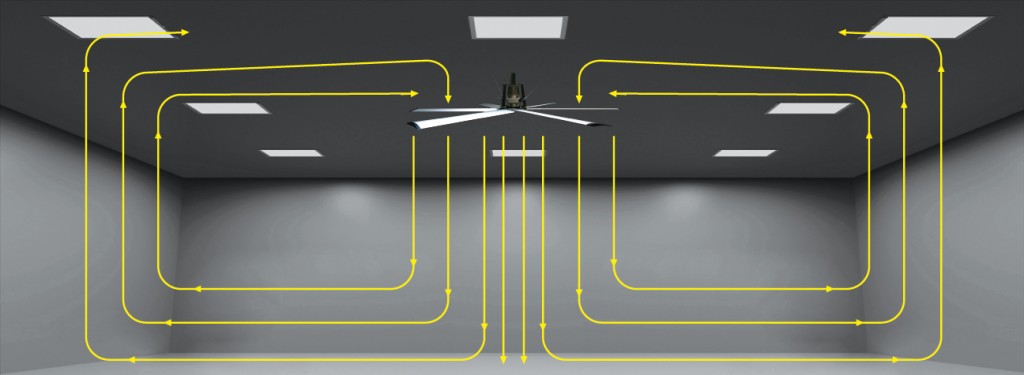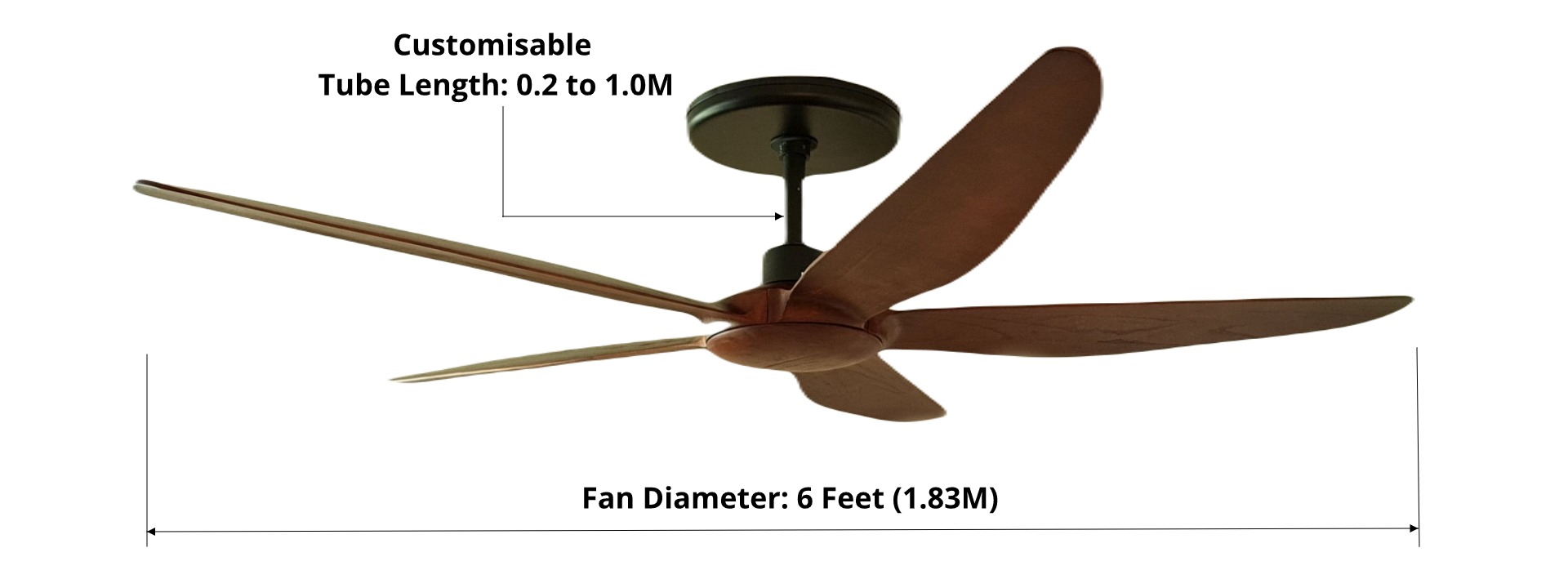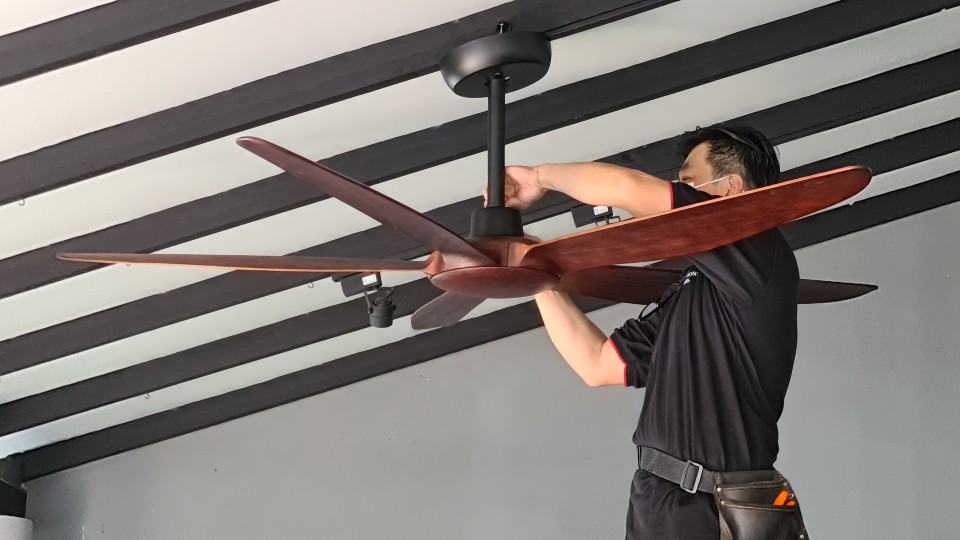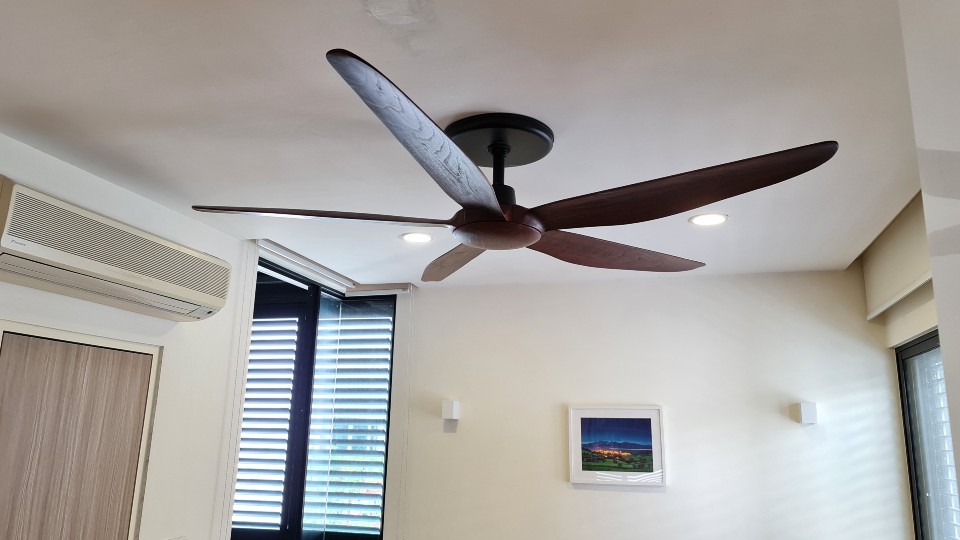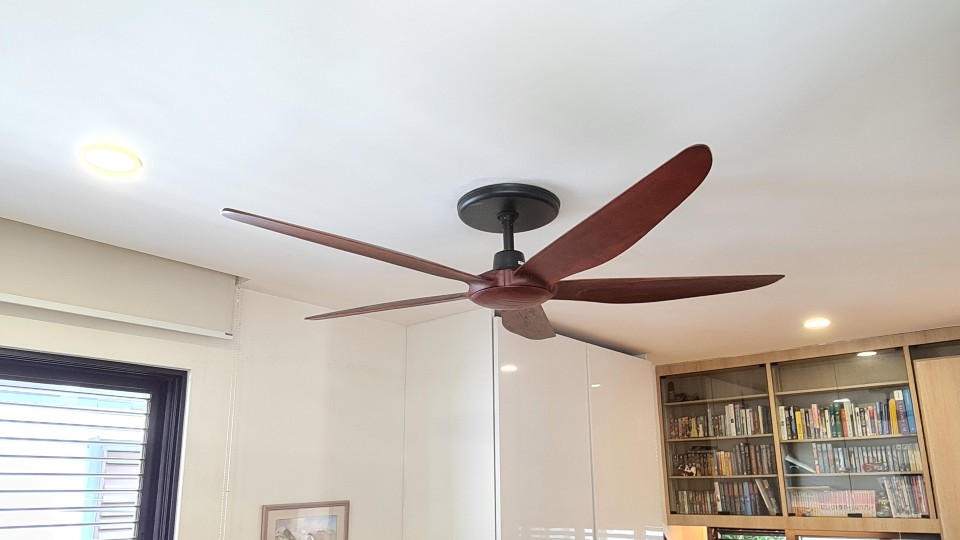HVLS Ceiling Fans – The Better Alternative

Traditional ceiling fan
When one mentions ceiling fans, the traditional ones come to mind, ie around 4 to 5 feet diameter rotating at blurring speed accompanied by a constant whirring noise (like the one shown in this picture).
There is a BETTER alternative ➡️ HVLS Fans.
What are HVLS Fans
HVLS stands for high-volume, low-speed. As the words suggest, these fans rotate slowly but moves a lot of air.
As a matter of fact, in the 1990’s, William Fairbank, a professor at the University of California and Walter K. Boyd, founder of MacroAir Technologies found that a fan of large diameter rotating at a slower speed creates more efficient cooling than one which is rotating faster.
Hence, HVLS fans were born.
How Do HVLS Fans Make You Cooler
Fans work on the principle that moving air breaks up moisture on the skin and accelerates evaporation to produce a cooling effect.
Due to the larger fan size, HVLS fans don’t require high speeds to move air. The slower, steadier speed and longer fan blades push large volumes of air from the ceiling down to the floor. The air then moves horizontally until it reaches a wall or boundary, it then projects upward and sideways. When the air rises, it is pushed down again by the HVLS fan, creating continuous airflow throughout the space. Smaller high-speed fans of equivalent displacement are incapable of producing the same effect.
This process is called evaporative cooling, which explains why a person feels cool in a breeze.

